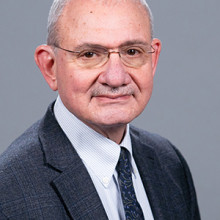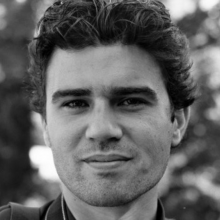Position Description
Ερευνητική εργασία στις ενότητες εργασίας (ΕΕ) 3, 4 και 5 με στόχο την πρωτοτυποποίηση των αισθητήρων ραμμάτων σε επίπεδο 4, την δοκιμή τους σε νεκρά δείγματα και την χρήση laser ακτινοβολίας για την a-posteriori αλλαγή των μηχανικών ιδιοτήτων των ραμμάτων
Για το πλήρες κείμενο της πρόσκλησης ακολουθήστε τον σύνδεσμο 'Related Documents'
Required Qualifications
- Πτυχίο Φυσικής, ή/και Επιστημών Μηχανικού
- Διδακτορικό Φυσικής, ή/και Επιστημών Μηχανικού
- Πειραματική εμπειρία και δημοσιεύσεις σε διατάξεις αισθητήρων πολυμερικών οπτικών ινών
- Πειραματική εμπειρία σε θέματα πολύτροπων οπτικών ινών
- Πειραματική γνώση οπτικής
- Επαρκής γνώση αγγλικής γλώσσας
Desirable Qualifications
- Πειραματική εμπειρία και δημοσιεύσεις σε διατάξεις φραγμάτων Bragg
- Εμπειρία σε προσομοιώσεις οπτικών ινών
- Εμπειρία σε θέματα βιοφωτονικών αισθητήρων
Application Procedure
Στο φάκελο υποβολής της πρότασης θα πρέπει να εμπεριέχονται τα ακόλουθα:
- Αίτηση (Form Greek στην αριστερή στήλη) με αναφορά στον κωδικό της θέσης και στο όνομα του προγράμματος
- Αναλυτικό Βιογραφικό Σημείωμα
- Ευκρινή φωτοαντίγραφα τίτλων σπουδών
ΥΠΟΒΟΛΗ ΠΡΟΤΑΣΕΩΝ
Οι ενδιαφερόμενοι καλούνται να υποβάλουν τις αιτήσεις τους και όλα τα απαραίτητα δικαιολογητικά, ηλεκτρονικά στη διεύθυνση hr@iesl.forth.gr με κοινοποίηση (cc): στον Δρ Στ. Πισσαδάκη (pissas@iesl.forth.gr). Οι αιτήσεις θα πρέπει να αποσταλούν με την ένδειξη: «Αίτηση στο πλαίσιο του προγράμματος ΦΑΕΘΩΝ, της πρόσκλησης εκδήλωσης ενδιαφέροντος με Α.Π. … και κωδικό θέσης … » (όπως αυτός αναφέρεται στον Πίνακα του Παραρτήματος).
Appointment Duration
6 μήνεςPosition Description
Ανάπτυξη ισχυρών πηγών THz από στερεά μέσα. Πειραματική εργασία στην ανάπτυξη ισχυρών πηγών THz από στερεά μέσα.
Για το πλήρες κείμενο της πρόσκλησης ακολουθήστε τον σύνδεσμο 'Related Documents'
Related Project
ENTERS -Required Qualifications
- Πτυχίο Φυσικής, Επιστήμης Υλικών ή Αντίστοιχων
- Μεταπτυχιακό Φυσικής, Επιστήμης Υλικών ή Αντίστοιχων
Desirable Qualifications
- Εμπειρία σε λέιζερ υπέρστενων παλμών και σχετικών πειραματικών διατάξεων
- Γνώση Αγγλικής γλώσσας
- Δημοσιεύσεις σχετικές με το ερευνητικό αντικείμενο
Application Procedure
Στο φάκελο υποβολής της πρότασης θα πρέπει να εμπεριέχονται τα ακόλουθα:
- Αίτηση (form Greek στην αριστερή στήλη) με αναφορά στον κωδικό της θέσης και στο όνομα του προγράμματος
- Αναλυτικό Βιογραφικό Σημείωμα
- Ευκρινή φωτοαντίγραφα τίτλων σπουδών
- Πρόσφατη βεβαίωση σπουδών υποψήφιου διδάκτορα
ΥΠΟΒΟΛΗ ΠΡΟΤΑΣΕΩΝ
Οι ενδιαφερόμενοι καλούνται να υποβάλουν τις αιτήσεις τους και όλα τα απαραίτητα δικαιολογητικά, ηλεκτρονικά στη διεύθυνση hr@iesl.forth.gr με κοινοποίηση (cc): στον Καθηγ. Στ. Τζωρτζάκη (stzortz@iesl.forth.gr). Οι αιτήσεις θα πρέπει να αποσταλούν με την ένδειξη: «Αίτηση στο πλαίσιο του προγράμματος ENTERS, της πρόσκλησης εκδήλωσης ενδιαφέροντος με Α.Π. … και κωδικό θέσης … » (όπως αυτός αναφέρεται στον Πίνακα του Παραρτήματος).
Appointment Duration
12 μήνεςFunding

Position Description
The prospective research assistant will develop quantum gates and quantum simulators with strongly-interacting Rydberg atoms controlled by lasers. This theoretical research will involve close interactions with several theoretical and experimental partners from Europe.
For the full announcement, follow the link "Related Documents"
Related Project
EuRyQa -Required Qualifications
- Diploma in Physics, Optics, Electrical Engineering, or related disciplines
- Master's Degree (MSc) in a relevant field
- Excellent knowledge of the English language
Desirable Qualifications
- Good background in quantum theory
- Computer and numerical programming skills
Application Procedure
Interested candidates who meet the aforementioned requirements are kindly asked to submit their applications to the address (hr@iesl.forth.gr), with cc to the Scientific Coordinator Dr David Petrosyan (dap@iesl.forth.gr).
In order to be considered, the application must include:
- Application Form (Form Greek or Form English to the left)
- Detailed curriculum vitae (CV) of the candidate
- Scanned Copies of academic titles
Appointment Duration
12 monthsFunding


Costas P. Grigoropoulos received his Diploma Degrees in Naval Architecture and Marine Engineering (1978), and in Mechanical Engineering (1980) from the National Technical University of Athens, Greece. He holds a M.Sc. degree (1983), and a Ph.D. (1986), both in Mechanical Engineering from Columbia University. He joined the faculty of the Department of Mechanical Engineering at the University of California at Berkeley as an Assistant Professor in 1990, after serving as an Assistant Professor of Mechanical Engineering at the University of Washington from 1986-1990. He was promoted to Associate Professor in July 1993 and to Professor in Mechanical Engineering in July 1997. He has conducted research at the Xerox Mechanical Engineering Sciences Laboratory, the IBM Almaden Research Center and the Institute of Electronic Structure and Laser, FORTH, Greece. He is Faculty Staff Scientist with the Environmental Energy Technologies Division of the Lawrence Berkeley National Laboratory.

Interests:
Vasilis has research activities and interests in novel photonic systems and lasers in the visible and Terahertz spectrum. His interests are on THz spectroscopy, integrated microresonators and semiconductor quantum well lasers. His research has applications to diverse areas such as Quantum Science, materials science and medical applications.
Education
- BA in Physics from the National and Kapodistrian University of Athens
- MSc and Ph.D. in Laser science and technologies from University of Southampton.
Career
- Ecole Polytechnique Federale de Lausanne (2003 -2005)
- Marie Curie researcher in University of Cambridge
- University of Southampton - appointed lecturer (2007)
- University of Southampton - Associate Professor (2012)
- University of Montpelier - visiting research fellow (2016)
- University of Southampton - Professor (2022)
- University of Crete- Associate Professor (2023)
Position Description
FORTH is seeking for one motivated PhD Candidate to work in the field of Soft Matter. The "CoCoGel" Network involves leading experts from 12 European labs and Industries with vast experience in experiments, computer simulations, and industrial systems. The candidate will enroll in the PhD program of the Department of Materials Science and Technology of University of Crete.
Job Description
Anisotropic particle gels under external and internal stimuli – Applications in industrial systems (DC2)
For details on the research projects see: https://cocogel.iesl.forth.gr/esr-projects
To qualify for the positions, you cannot have resided or carried out your main activity (work, studies, etc.) in Greece for more than 12 months in the 36 months preceding the recruitment start date. The candidates will spend 18 month at industrial partners during which they will work on industrial systems and applications.
Start Date
after 1/8/2024 and not later than 1/1/2025
Related Project
CoCoGel -Required Qualifications
- Undergraduate degree and Master's in fields covering soft matter fundamentals (e.g., chemical engineering, physics, materials science)
- Background in physical chemistry and Laboratory experience with soft materials (polymeric, colloidal)
- Two (2) Recommendation letters
- Publications and Presentation/communication skills
Desirable Qualifications
- Experience in experimental techniques, especially rheology, scattering or microscopy
- Experience in programing and computer simulations
Application Procedure
Interested candidates who meet the aforementioned requirements are kindly asked to submit their applications to the address (hr@iesl.forth.gr), with cc to Prof. George Petekidis (georgp@iesl.forth.gr) and Dr. Dusanka Ljumovic (cocogel@iesl.forth.gr).
In order to be considered, the application must include:
- Application Form (Form Greek or Form English to the left)
- Detailed curriculum vitae (CV) of the candidate
- Scanned Copies of academic titles
- Two (2) Recommendation letters sent directly to hr@iesl.forth.gr and to Prof. George Petekidis
Appointment Duration
12 - 36 MonthsFunding

Position Description
The technician is expected to join the proteomic facility of IMBB (ProFI) and perform cultivation of diatoms, analysis of proteins in SDS-PAGE electrophoresis and sample preparation for Mass Spectrometry (MS) analysis using the ProFI Orbitrap equipment. Finally assist in the analysis of the MS results using standard software and setting for the subsequent in depth (statistical) analysis.
Required Qualifications
- Bachelor degree (B. Sc) in Chemistry or Biology
- MS.c. degree in biological or physicochemical sciences
- Experimental laboratory experience in protein expression and purification and biophysical characterization of proteins
- Knowledge of English language
Desirable Qualifications
- Experience in using sample preparation methodologies for Mass spectrometry analysis
Application Procedure
Interested candidates who meet the aforementioned requirements are kindly asked to submit their applications to the address (hr@iesl.forth.gr), with cc to the Scientific Responsible, Dr P. Loukakos (loukakos@iesl.forth.gr).
In order to be considered, the application must include:
- Application Form (Form Greek or Form English to the left)
- Detailed curriculum vitae (CV) of the candidate
- Scanned Copies of academic titles
Appointment Duration
8 months with possible extension for 6 morePosition Description
The researcher is expected to perform high-level, competitive research on the development and optimization of experimental holographic interferometry methods, aim-targeted experimental design, development of instrumentation procedures and methodologies, analysis, post-processing and interpretation of holographic interferometry data and modeling with emphasis on applications in structural diagnosis for items of cultural heritage. This research will be conducted in the context of a highly cross-disciplinary project, iPhotoCult, aiming to develop and establish high technology portable instrumentation for the restoration and conservation of Cultural Heritage. The project joins together major centers of research.
Required Qualifications
- PhD either in Applied Sciences, Physics, Engineering, Photonics or relevant field
- Experience in lasers, optics, and experimental physics
Experience especially in holography and holographic interferometry data analysis will be highly appreciated
Knowledge of Thermography and other Non-Destructive Testing tools is advantageous
Desirable Qualifications
- Strong background and experience in experimental physics, instrumentation development/testing and methodology development
- Previous post-doctoral experience advantageous
- Ability to conduct independent, original research in an interdisciplinary context
- Competence in English (written and spoken)
Application Procedure
Interested candidates, who fulfill the above requirements, are kindly asked to submit their applications by e-mail to Dr Vivi Tornari (vivitor@iesl.forth.gr).
The application package must include the following :
· Application Form (please download form at the end of this page)
· Detailed curriculum vitae (CV) of the candidate
· Motivation letter by the candidate
· Copies (in pdf format) of academic titles/transcripts
· At least two (2) recommendation letters.
The applicant should arrange that these letters be sent to IESL-FORTH (hr@iesl.forth.gr, vivitor@iesl.forth.gr ) directly by their scientific supervisor/ employer.
Appointment Duration
36 months (with possibility of extension to 42 months)Abstract
Requirements
1. Input energy range <50 µJ and input pulse duration <300 fs (sech2 fit).
2. Output: pulse duration <100 fs (sech2 fit); Spectral bandwidth 1010-1050 nm (10% level).
3. All dielectric-mirror multipass-cells technology with negligible absorption
4. Monolithic aluminum housing with optional water-cooling
5. Requires no active beam-pointing stabilization of the laser
6. Footprint: <40x25 cm2
7. Transmission >90%


